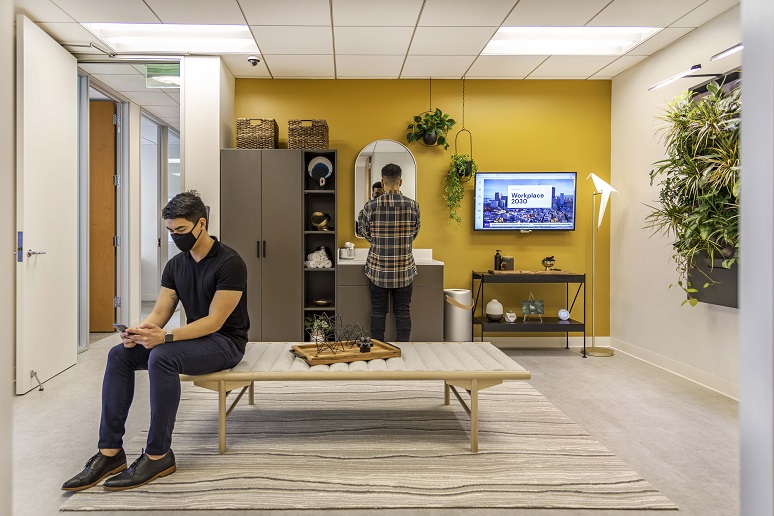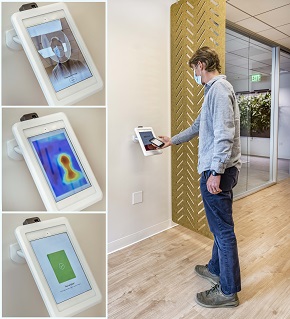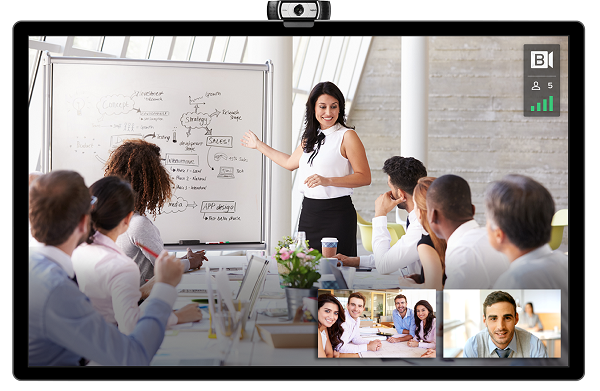Given the unimaginable year we’ve been through, imagining a return to the office is a big ask for many workers, let alone the workplace strategists tasked with overseeing their companies’ reopening projects. But, as the saying goes, seeing is believing.
The idea behind that adage is essentially what popped to mind back in the spring for Brandon Cook, director of marketing at
Proxy, a digital identity startup that offers touchless access to devices and spaces, as he recounted in a WorkSpace Connect briefing. Cook is the executive director of
Workplace 2030, a model office in San Francisco featuring the “technology, services, design, and practices … making it possible to experience firsthand how the future workplace will function,” as stated on the organization’s website.
Because Proxy works with the people in real estate, security, HR, and other strategic workplace disciplines carrying the onus for re-occupancy, Cook said he had quickly come to understand how much anxiety surrounded this task. For one, he said, they had no on-the-job experience for this unprecedented situation. And two, they faced a dauntingly unrelenting flood of information from companies marketing, or remarketing, products aimed at making offices habitable again.
With one goal of “cutting through the BS,” Cook decided to create a prototype office that would showcase how the various pandemic-oriented technologies and design principles would work in a real-world scenario and not just on paper or in a lab, he said. “We wanted to create a space that works like an exploratorium, where you can go in and actually experience — feel and touch — all of these technologies and innovations and designs.”
Workplace 2030 was not a go-it-alone venture; it has taken more than $1 million in donated good and services to build the functional office prototype, which includes an entryway mud room and health screening area besides workspaces. As such, Cook works with a wide range of advisors from such diverse fields as medicine, real estate, construction, interior design, communications technology, and more. Maureen Miller, an infectious disease epidemiologist at Columbia University, jumped on board first — Cook’s first outreach. “We wanted to be sure that absolutely everything we did was done under the supervision of the one group of the population that has been preparing for this,” he said.
In planning Workplace 2030, top-of-mind technology issues to address included:
- Air filtration — Replacing an HVAC system being cost-prohibitive and logistically infeasible for many offices, the Workplace 2030 team knew it would need to find a different way to address this environmental concern, Cook said. So, the model office features an air purification system from Molekule, a company that also provides such systems for medical use cases. Additionally, the office features organic purification via plant walls provided by Biome.
- Touchless interfaces — This is Proxy’s forte, and its digital identity technology comes into play for various purposes throughout the office. On its own or in conjunction with partners, the digital ID technology comes into play for automated health checks, auto-opening of doors, touchless printing, occupancy check-in, occupancy visualization and heat mapping, and digital welcome screens.
- Collaboration — With a nod to the understanding that few people are going to return to the office five days a week, the Workplace 2030 team knew the space would have to allow for collaboration not only onsite, but also provide an equal experience for remote workers, Cook said. This meant finding collaboration technology that provided good video and audio — the latter a nod to the difficulty of participating in a collaboration session from afar when you might be able to see, but not hear, everybody — as well as digital whiteboards that helped everybody feel included. To optimize the remote worker collaboration experience, Workplace 2030 uses BlueJeans video conferencing solution that incorporates acoustic technology from Dolby Labs, along with a digital whiteboard solution from Accenture.
Free education is an important element of Workplace 2030, not only in the physical space but online, as well. The organization’s
online learning center features a virtual demo of the model office, for example, and business leaders can even get expert guidance from Miller via an
Ask an Epidemiologist request form. Look, too, for the Workplace 2030 organization to bring its model office build to other cities; Chicago and New York, among others, are on the list, Cook said.
Whether you’re able to stop by the San Francisco Workplace 2030 office now open or take a virtual tour, Cook does ask you keep in mind that what he and his partners have built is not a COVID-response workplace. Rather, he said, this project is about “taking everything we’ve learned in the last five or six months and applying it to how we design an office for the next 10 years.”






